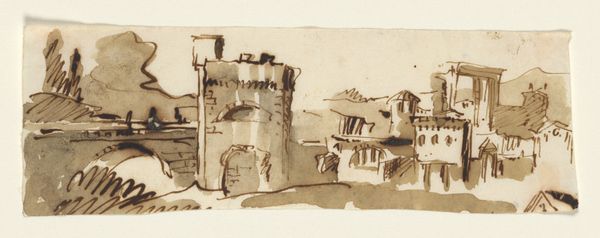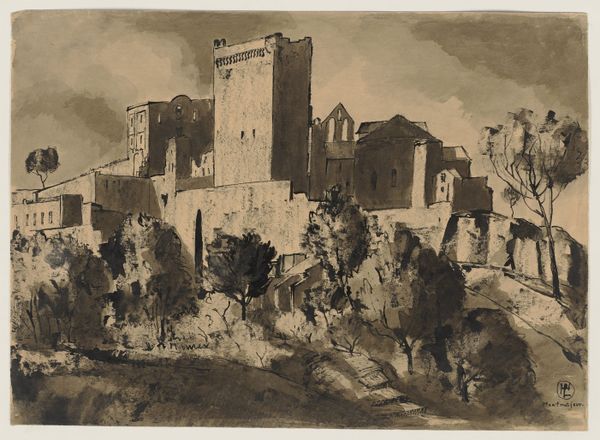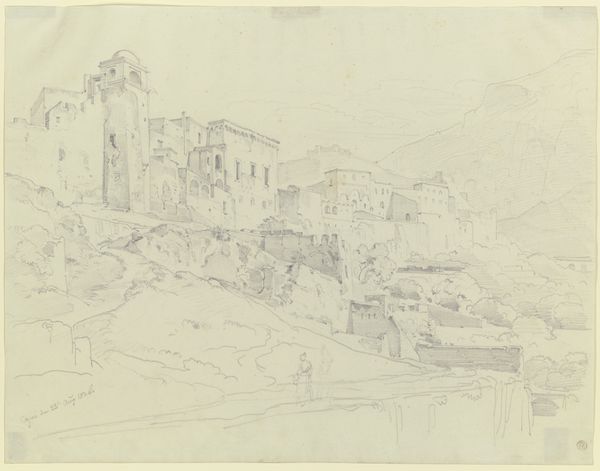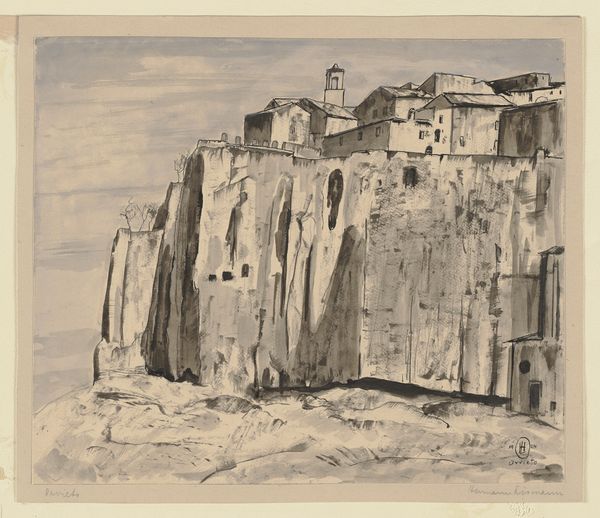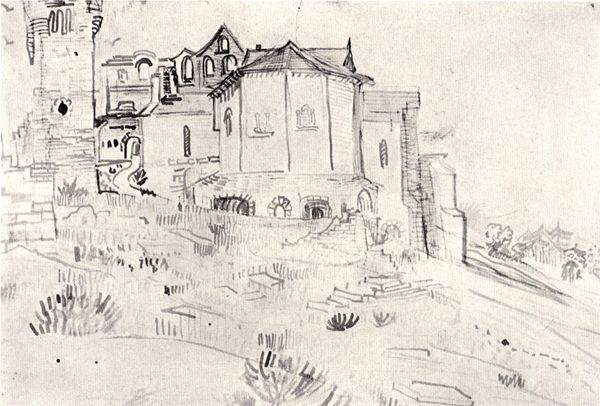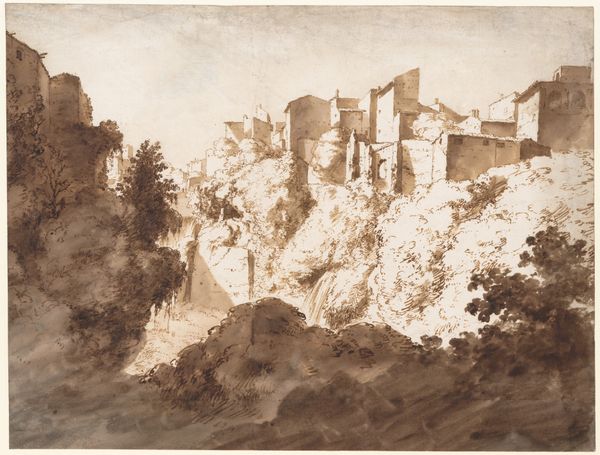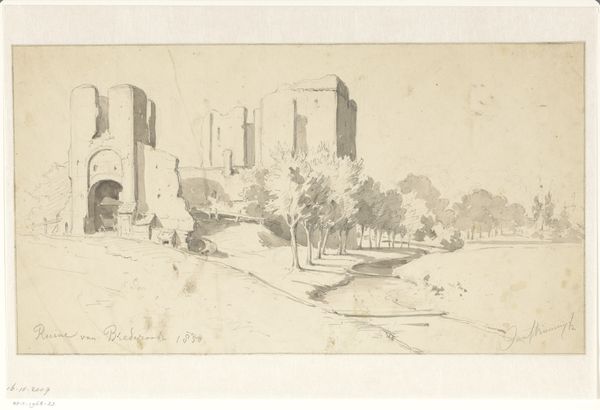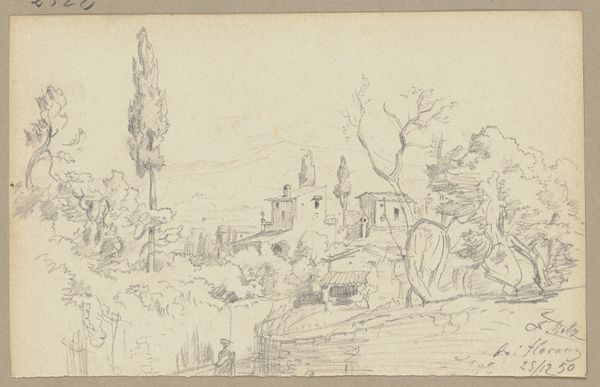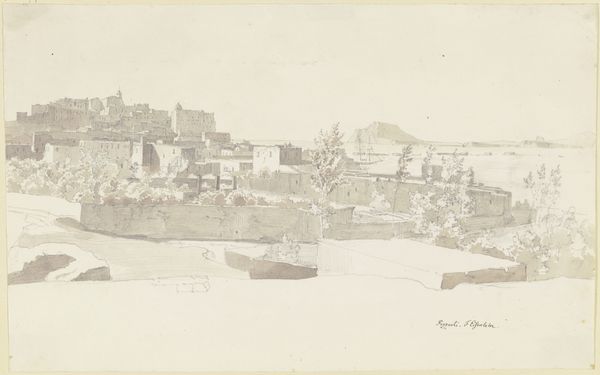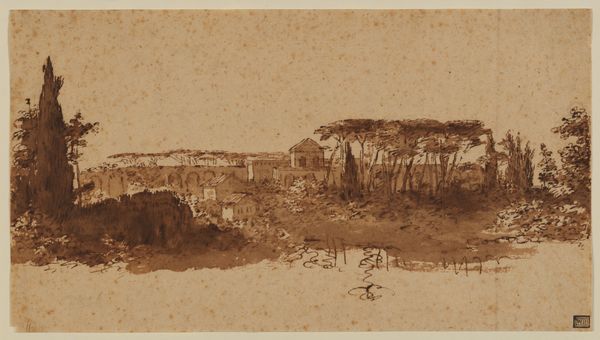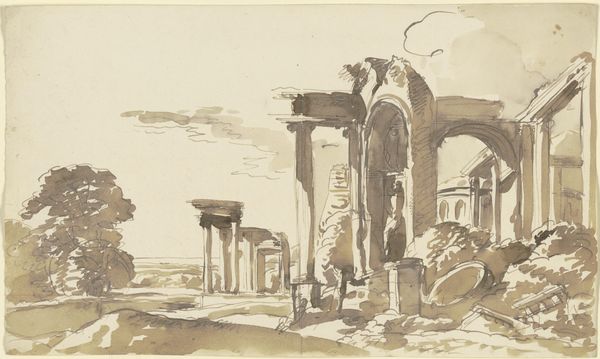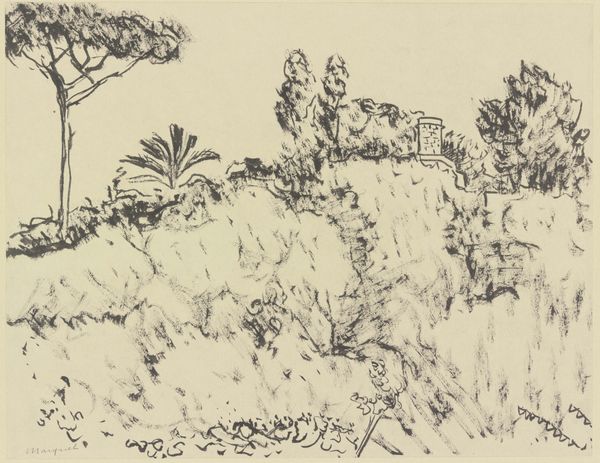
drawing, paper, ink, architecture
#
drawing
#
landscape
#
paper
#
ink
#
modernism
#
architecture
Copyright: Public Domain
Curator: This is Hermann Lismann's "Collioure," created in 1928. It's an ink drawing on paper, housed here at the Städel Museum. Editor: It's really moody, isn't it? Almost like a dreamscape. All those swirling trees, surrounding that very solid building. Like the natural world reclaiming a monument. Curator: I see the drawing as an exploration of modernist themes in the landscape tradition, reflecting the tension between the built environment and the natural world. It draws from earlier traditions while embracing simplification, stark lines, and form in ink, similar to the "New Objectivity" movement gaining momentum in Germany during that period. The choice of Collioure, a location significant in artistic circles due to its association with artists like Matisse, is quite revealing. Editor: Interesting! You know, for me, the contrast is what grabs me first—that hefty structure looming behind all that ethereal foliage. It feels symbolic somehow, a kind of power dynamic in black and white. Or sepia, rather. Makes you wonder about the structures, literal and not, that shape the wild, doesn’t it? Curator: Indeed. Considering Lismann's experience as a Jewish artist in the early 20th century, observing rising antisemitism and social unrest, we might interpret this "fortress" as representing existing power structures or institutions that appear unyielding in the face of social and political change. Editor: Whoa. Hadn't even thought of it that way. Suddenly, those seemingly benign palm trees look like they might be whispering secrets… Curator: Art becomes even richer as we bring these contexts together and discuss them. We might understand that tension through multiple dimensions beyond just pictorial contrast, for example, the contrast of being inside and outside an identity, which gives a piece like this further layers of social commentary. Editor: It certainly does for me now! Suddenly seeing Collioure so differently. Thanks for giving me a new lens! Curator: Thank you! By layering different critical and cultural perspectives we can achieve a richer understanding of art. Editor: Couldn't agree more!
Comments
No comments
Be the first to comment and join the conversation on the ultimate creative platform.

